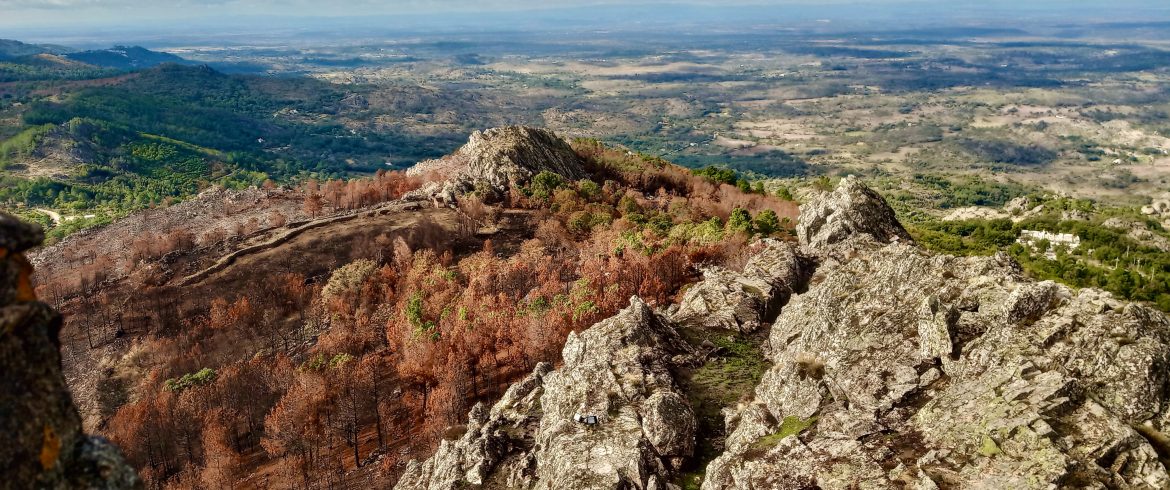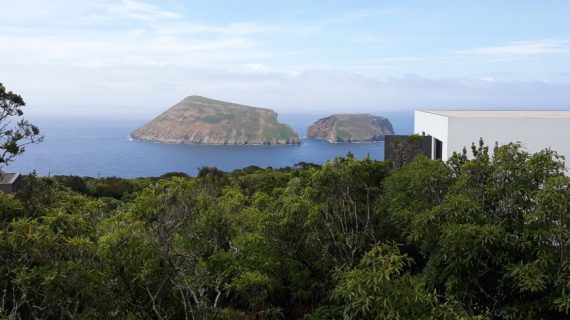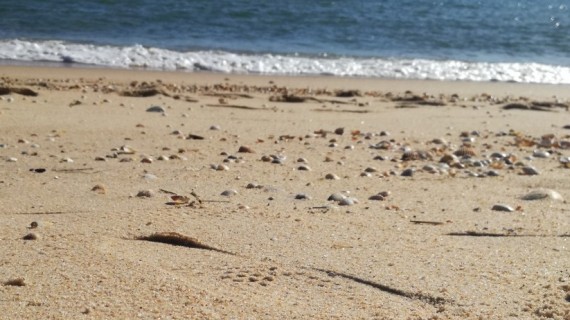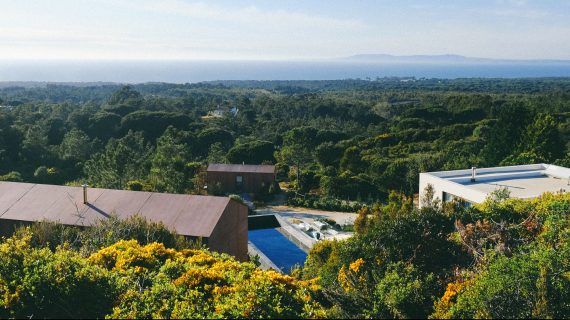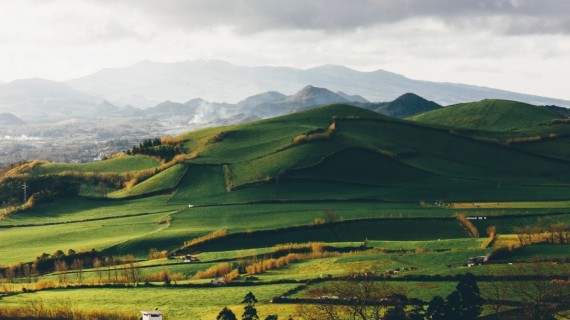In Portugal, man and nature live in perfect harmony. There are numerous natural places classified as Parks and Nature Reserves. Don’t miss one of the following 5 natural parks in Northern and Central Portugal for an escape from the city and full immersion in Portuguese nature!
1. Peneda-Gerês Natural Park

The Peneda-Gerês natural park is one of the most beautiful natural parks located in the far north-west of Portugal between the regions of Alto Minho and Trás-os-Montes near the border with Galicia, in the province of Ourense. It is the only protected area classified as a National Park. It offers extraordinary landscapes with mountains and artificial lakes, waterfalls and rivers. The lush vegetation displays all shades of green. In the mountains of Peneda, Soajo, Amarela, and Gerês, which are part of the park, rivers and streams flow into waterfalls and then into artificial lakes.
Here you can encounter many wild animals such as the roe deer (symbol of the park), the Iberian wolf, the Garrano, and the Castro Laboreiro dog. Many footpaths cover 50 square kilometres of the park’s public land. The best season to go there is summer, as the water in the falls is cold and therefore more pleasant at higher temperatures. Not only the Azores are a waterfall destination, but also in Geres, you can take a swim in the following waterfalls located in the western part of the park:
- Portela do Homem waterfall
- Arado Waterfall
- Tahiti Waterfall
- Mizarela Bridge
- Fafião waterfall
- Fecha de Barjas waterfall
- Pincaes
- Cela Cavalos waterfall

There are also many rural villages that you can not miss, including the village of Geres, Ermida, Sirvozelo, Ruivães, Venda Nova, and Fafiao, where we recommend sampling the local delicacies at the Fojo dos Lobos restaurant.
The viewpoints are:
- Miradouro da Pedra Bela
- Fojo do Lobo de Fafiao
2. Montesinho Natural Park

The Montesinho Natural Park is located in the northwest of Portugal, in the region of Trás-os-Montes. It is one of the largest natural parks in the country. It is characterized by valleys and forests where small towns hide and blend harmoniously with the landscape. Take a hike and appreciate the region’s diverse flora and fauna, or if you are more experienced, try your hand at climbing and outdoor activities. This enchanting place is also ideal for birdwatching.
In addition to the park’s natural beauty, admire the construction of houses with shale or granite walls. The park is home to several small towns such as Montesinho, Rio de Onor and Guadramil. The main surprise when visiting these small villages is to discover that they are communal, i.e. the common goods are shared among the inhabitants. For example, the wood-burning oven, the mill, the washhouse, the land for cultivation, and the pastures are used and managed by the population.
The two highest points in the park are the Serra a Coroa (to the west) and the Serra de Montesinho (to the east), which can be explored on foot or by bicycle. Visit the protected area of Albufeira do Azibo, between Macedo de Cavaleiros and Bragança, where you can go birdwatching and swim in the waters of the river beach of Fraga da Pegada.
As regards gastronomy, we recommend you try the area’s cured meats and meat from local livestock, all accompanied by a red wine from Trás-os-Montes. In addition, try the sweets made with eggs and honey produced by the bees that live in the park.
3. Alvão Natural Park

If you are a lover of extreme sports and waterways, you should visit the Alvão Natural Park. This park, located between Minho and Trás-os-Montes, in Mondim de Basto and Vila Real, is famous for the Fisgas de Ermelo, one of the biggest waterfalls in Europe, where the Olo river falls from a height of more than 200 metres. Wandering through the park you can spot Iberian wolves, alpine choughs, golden bats, eagles and admire an incredible flora, with over 480 species, including oak, holly, and many others. Its two distinctive and very different ecosystems make this park wonderful. Throughout Alvão you will find rocks and stones protruding provocatively from the wild grasses and are fascinating features.
4. Serra da Estrela Natural Park

The Serra da Estrela Natural Park is Portugal’s largest protected area. It is the highest point in mainland Portugal. It is located in the central mountainous area between the valleys of the rivers and streams that originate in these mountains such as the Mondego, Alva, and Zêzere. The landscape is diverse and rocky, there are lagoons, oak and chestnut forests. The largest element of the central mountain range is Torre, with a height of 1.991 metres. Snow appears frequently in the park, so it is possible to practice various winter sports such as skiing and snowboarding. This park is also an excellent destination for hiking, horseback riding or cycling. There are around 375 kilometres of marked trails of varying degrees of difficulty. If you want to experience the extraordinary sensation of flying, paraglide in Linhares da Beira and fly over this historic village.
Mount Estrela is a fundamental testimony to the last glaciation, which occurred some 30.000 years ago. It has a high geodiversity and rocks that are up to 600 million years old. These facts have been recognized by UNESCO, giving it the status of a geopark, the so-called Estrela Geopark. There are numerous flocks of sheep ‘ovelha da Serra da Estrela’ and the sheep’s milk gives rise to the region’s most characteristic product. This is the famous Queijo da Serra da Estrela, an artisanal cream cheese that should be tasted at least once in a lifetime. In Celorico da Beira, in the Solar do Queijo, you can learn all about its production.
5. Arrabida Natural Park

The Arrabida Natural Park is a true green paradise that runs along the Portuguese coast from Palmela to Setúbal. There are numerous beaches with crystal-clear blue water where you can dive and climb in the mountains. Unspoiled beaches such as Figueirinha and Galapinhos are particularly beautiful amidst all the other riches on offer. There are also hundreds of caves with fossil deposits and dinosaur tracks.
Visit this fantastic reserve surrounded by the scent of daffodils, orchids, broom, and rosemary. Inland, the yellow plains give way to patches of dark green forest covering the rolling hills bordering the white coastline below. Enjoy a boat trip to the lake to admire the beauty of the coastline from afar and on the water in the bright sunshine.
These natural parks in Portugal are the perfect setting for a quiet day in touch with nature. Get away from the city and discover the wonders of the environment around you!
